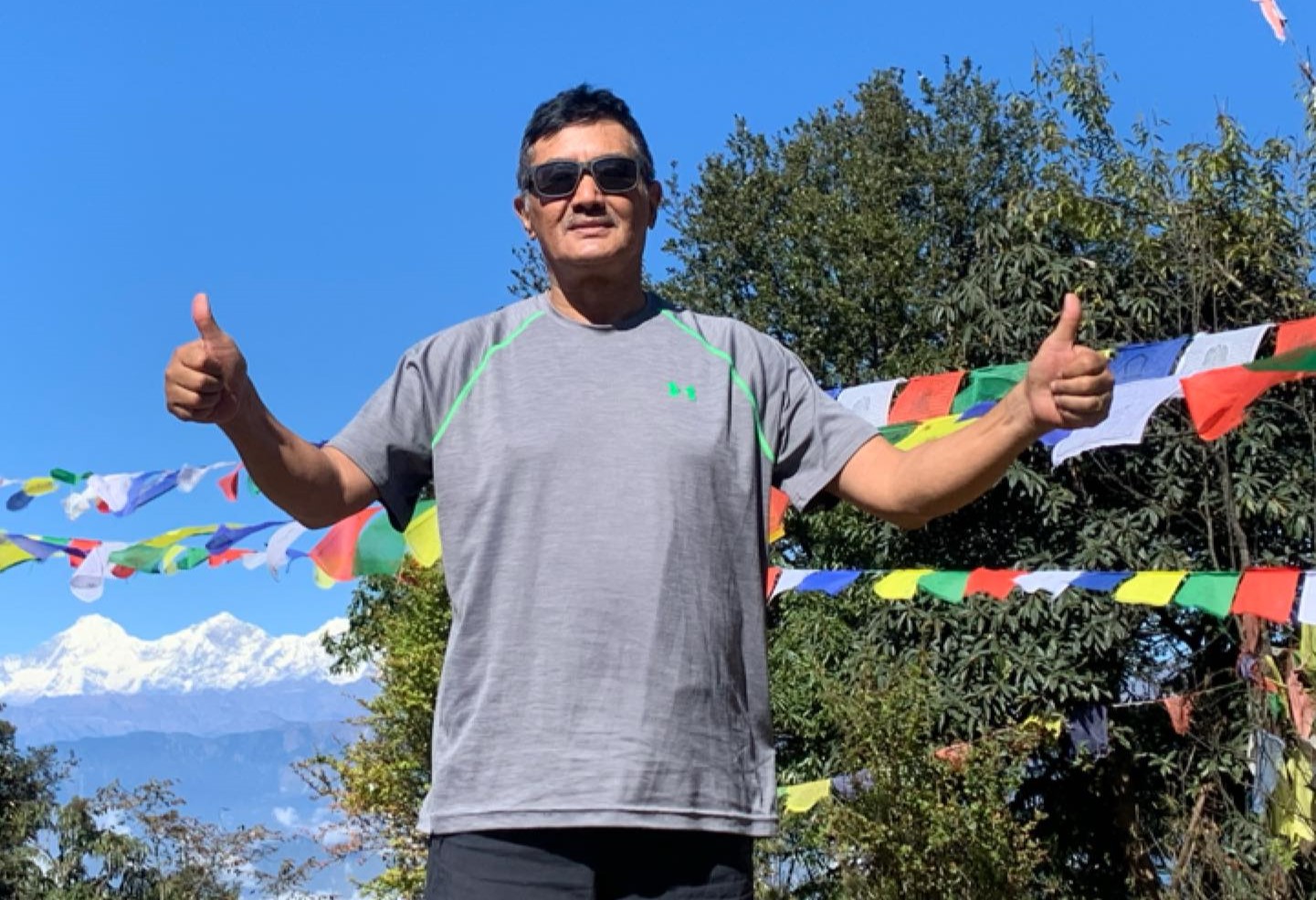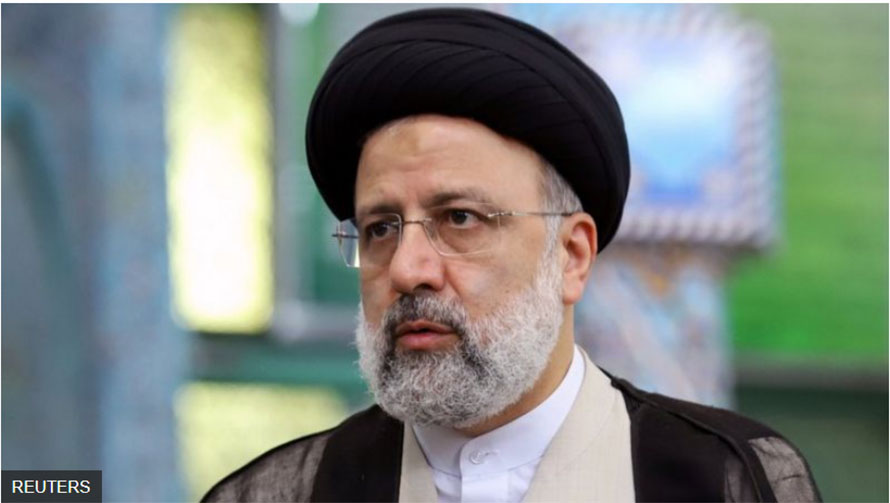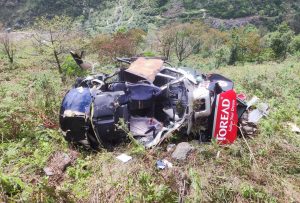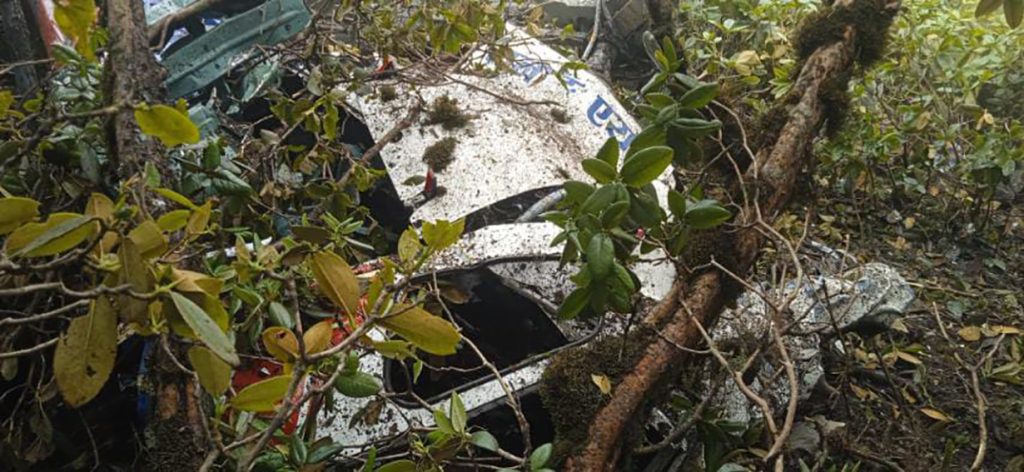
Due to the ever-changing weather and mountainous terrain, the Nepali airspace is perceived as highly hazardous, posing risks not only to aeroplanes but also to helicopters. Manang Air helicopter crashing in the hills of eastern Nepal is proof of that as it became the 42nd helicopter crash in the country’s history.
It is unclear how the helicopter crashed as there are reports the pilot was told the weather was clear between Solukhumbu and Kathmandu. But the helicopter crashed a few minutes after flying bringing an old but serious question to light.
Why do helicopters, that are considered safe in international airspace, crash in Nepal so often?
The Manang Air helicopter left Sukre for Kathmandu at 10.15 am. Authorities say it came into contact with the air traffic controller in Lukla at 10.13 am. By this time, the helicopter was at Lamjura Pass. After that, Kathmandu’s air traffic controller should have contacted this helicopter, but it did not.
According to Pratap Babu Tiwari, General Manager of Tribhuvan International Airport, after the helicopter did not come into contact with the tower, the Search and Rescue Center at TIA dispatched two Altitude Air helicopters to look for the missing chopper.
Locally, the police were also on the lookout. Assistant Police Inspector Nirajan Basnet, the frist respondent to the scene, says there was a lot of commotion around the spot. The helicopter had crashed and it was unlikely there would be any survivors.
There were six people on the helicopter. Five of the six were Mexican tourists and they were flown by experienced pilot CB Gurung. They were in Lukla on Monday and had taken the mountain flight to get a glimpse of the highest mountains in the world. Little did they know, that their flight back was going to be their last.
Weak system
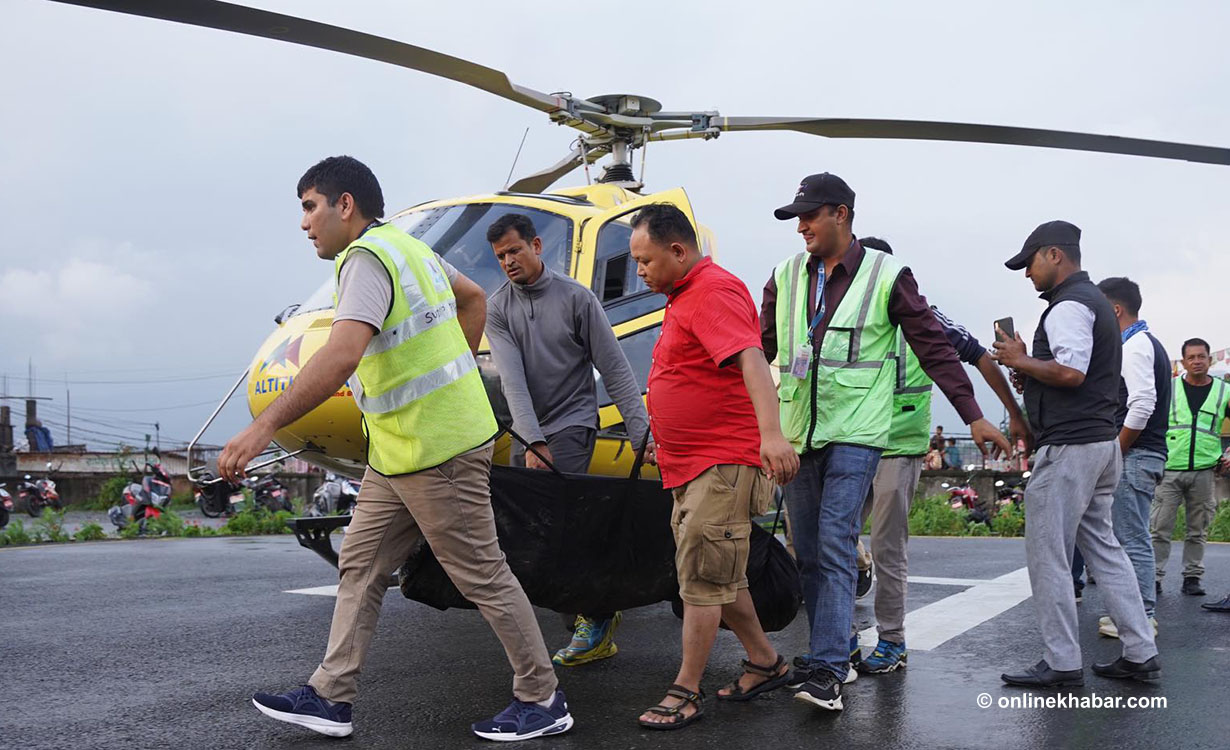
While the Civil Aviation Authority of Nepal (CAAN) has been claiming that the Nepali skies are safe, regular accidents prove otherwise.
In 2023, there have been four helicopter accidents where seven people died. If you take the Yeti Airlines crash into account, five incidents have happened in the space of little over six months in the country.
Former Director General of CAAN Rajesh Raj Dali says that a serious analysis should be done regarding the frequent helicopter crashes in the country.
“You need to follow international rules when flying a helicopter,” he said. “It is time we carefully monitor if companies are abiding by these rules or not.”
Helicopters have become an effective means of transportation to go to travel to remote areas in Nepal. They are used to pick and drop off tourists along with being used in rescue missions. On top of that, they are also used for the transportation of goods to these areas. During tourist and mountaineering season, the number of flights is significantly high. Their line of work is quite broad.
Despite the growing usage of helicopters in Nepal, there is currently no established system in place to provide accurate weather and geographical information to the helicopters that fly at low altitudes. In certain situations, pilots have to depend on information from other helicopters.
This is particularly risky when flying over hilly terrains, as pilots must rely on visual cues to navigate, which can be significantly challenging during adverse weather conditions.
In numerous instances, helicopters are required to land in areas lacking designated helipads. While improving existing helipads could contribute to reduced crashes, unfortunately, this aspect has not received sufficient attention.
Better oversight needed

Additionally, there have been instances where pilot performance and oversight by the helicopter company have been identified as areas of concern in helicopter flights.
Companies and pilots have disregarded air traffic control instructions and have flown in foggy conditions, at low altitudes with more than the maximum load capacity.
The majority of crash studies have indicated that pilots attempting to navigate adverse weather conditions have been a significant factor leading to an increased number of accidents.
CAAN has been taking action against pilots. On March 23, pilots of Fishtail Air, Air Dynasty and Annapurna Helicopter were punished for breaching air safety standards.
On April 27, Altitude Air’s senior captain and maintenance manager were suspended indefinitely. They were suspended for not undertaking regular checks before and after flights.
In a notable incident last January, a helicopter travelling from Pokhara to Waling in Syangja landed on a football pitch while the game was still going on. The pilot and the passengers were physically assaulted. The authorities took disciplinary action against the pilot in response to this incident.
Furthermore, an official from the authority has observed a concerning trend where experienced pilots are more frequently involved in accidents. This suggests that accidents may have increased due to pilots taking unwarranted risks driven by overconfidence.
42 crashed, 104 deaths
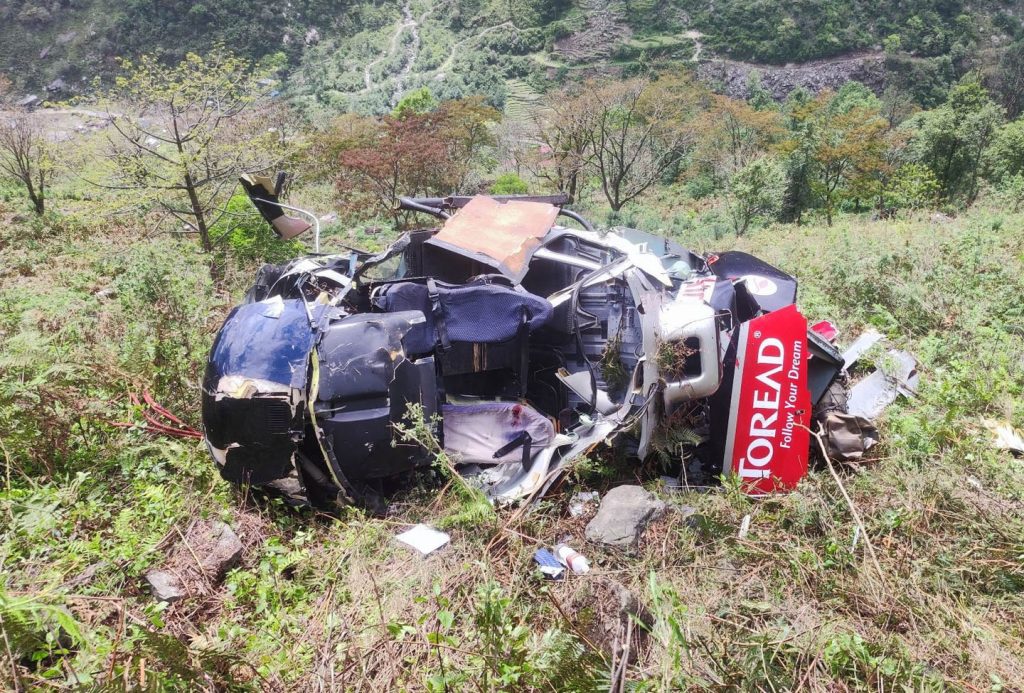
That carelessness and overconfidence coupled with the geography and weather have led to 42 helicopter crashes and the deaths of 104 people. CAAN data says the first helicopter accident in Nepal happened in 1979 in Langtang when VVIP Helicopter crashed killing six on board.
In 1997, a Karnali Air helicopter crashed in Thupten Choling, killing one person. In another accident in Mulkharka in 1998, three people died.
In 2002, 11 people aboard an Asian Air helicopter died in Solukhumbu. In 2003, a Fishtail helicopter crashed in Rara Lake, killing 4 people. In the same year, a Simrik Air helicopter crashed at Everest base camp, killing 2 people.
In 2005, three people lost their lives when a Heli Hans helicopter crashed in Ramechhap.
In 2006, the biggest helicopter crash happened. Forest State Minister Gopal Rai along with conservationist Harka Gurung were on board when a Shree Airlines helicopter crashed in Taplejung, killing 24 people. Conservationists mourn this day even today.
In 2010, two people lost their lives when a Fishtail Air helicopter crashed in Ama Dablam mountain. Helicopter crashes in 2013 and 2014 in Simikot and Sindupalchowk respectively resulted in the death of two people. In 2015, a Mountain Heli helicopter crashed on Yamuna Hill in Sindhupalchowk, killing four people.
Similarly, in 2015, 13 people, including American soldiers, lost their lives when an American army helicopter that went to the rescue of earthquake victims crashed in Dolakha. Again in 2016, seven people died when a Fishtail helicopter crashed in Nuwakot.
In 2018, a Manang Air helicopter crashed in Hilsa, killing one person. In the same year, six people died on the spot when Altitude Air’s helicopter crashed in Nuwakot.
In 2019, Minister of Tourism Rabindra Adhikari died when the helicopter he was on crashed in Taplejung. He was flying with tourism entrepreneur Ang Tsering Sherpa, PMO under-secretary Yubaraj Dahal, officials from CAAN Birendra Shrestha and Dhurva Bhochhibhya, security personnel Arjun Ghimire and pilot Prabhakar KC.
The inquiry commissions established following helicopter accidents have commonly identified several key factors as the main causes. These factors include the challenging geographical terrain of Nepal, the swiftly changing weather conditions, and the tendency of pilots to fly irrespective of unfavourable weather and terrain. These elements have consistently been recognised as significant contributors to helicopter accidents in the country.







